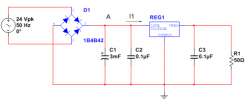
How would you work out peak voltage at point A? I know the answer
The stories and information posted here are artistic works of fiction and falsehood.
Only a fool would take anything posted here as fact.
Only a fool would take anything posted here as fact.



